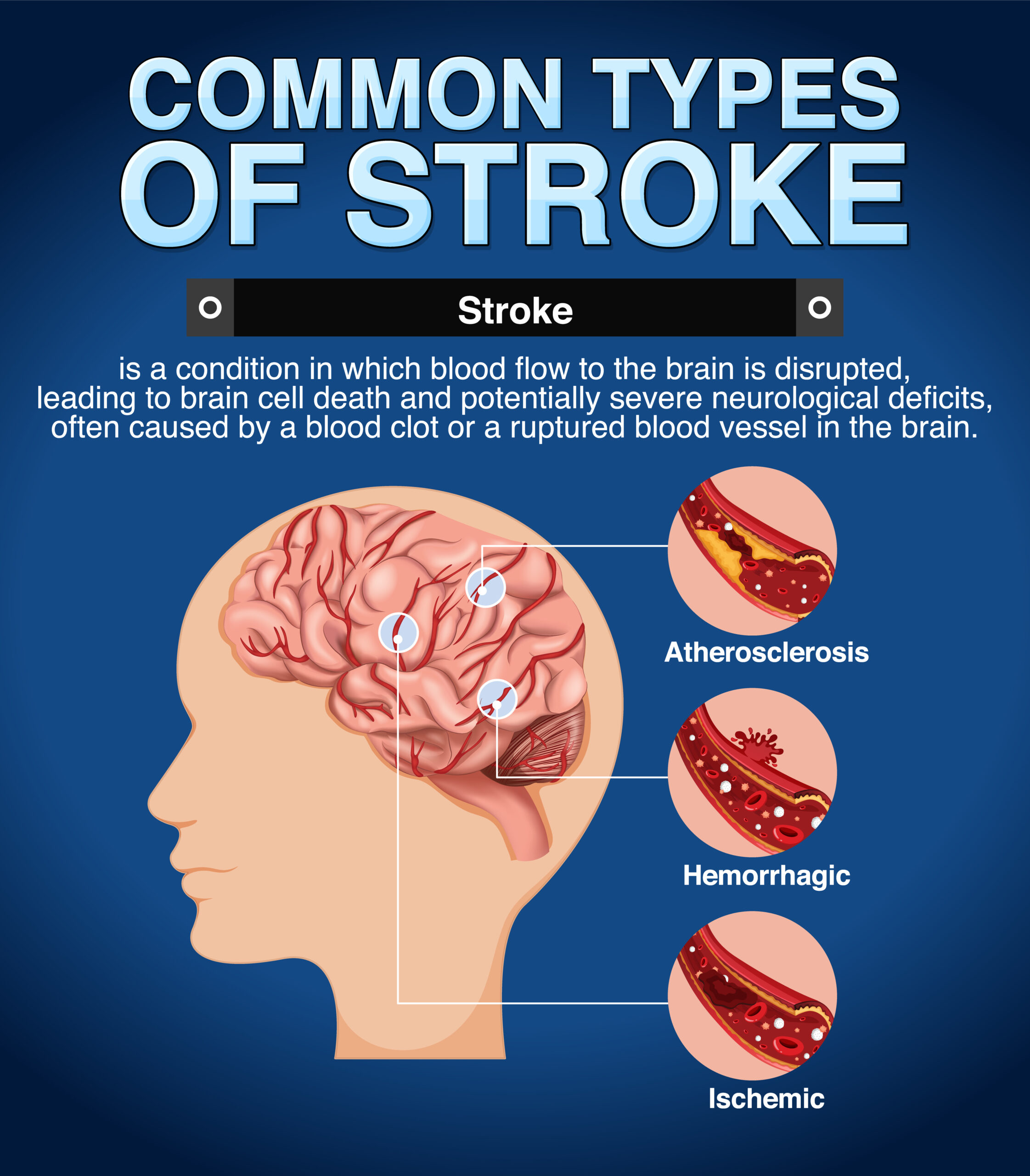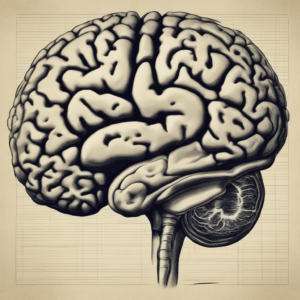What is stroke or brain attack and its symptoms, types, causes, prevention, and treatments?
A brain stroke or brain attack is a severe medical condition that affects the brain’s blood flow. It can lead to permanent disability or even death if not treated promptly. This article will delve into the various aspects of brain stroke, including its symptoms, types, causes, prevention strategies, and treatment options.
What is a Brain Stroke?
A brain stroke occurs when the blood circulation in the brain is either blocked or when a blood vessel in the brain ruptures and leaks. This disruption prevents oxygen from reaching the brain tissue, leading to the rapid death of brain cells and causing various symptoms. Swift medical intervention is crucial to minimizing brain damage and improving the chances of recovery.
Symptoms of a Brain Stroke
The signs and symptoms of a brain stroke can vary but generally appear suddenly. Key symptoms include:
- Sudden numbness or weakness in the face, arm, or leg, particularly on one side of the body
- Sudden confusion or difficulty understanding speech
- Trouble speaking or slurred speech
- Sudden vision problems in one or both eyes
- Sudden trouble walking, dizziness, or loss of balance and coordination
- Severe headache with no apparent cause, possibly accompanied by vomiting or unconsciousness
Types of Brain Stroke
There are two primary types of brain stroke: ischemic stroke and hemorrhagic stroke.
Ischemic Stroke
Ischemic stroke is the most prevalent type, accounting for approximately 80% of all brain strokes. It happens when blood vessels in the brain are blocked and cutting off blood flow. There are two subtypes of ischemic stroke: thrombotic stroke and embolic stroke.
- Thrombotic Stroke: This subtype occurs when a blood clot forms within a damaged or diseased artery in the brain, blocking blood flow. It is the most common type of ischemic stroke and is often caused by atherosclerosis.
- Embolic Stroke: This subtype is caused by a clot or a small piece of plaque that breaks free from another part of the body and travels through the bloodstream until it gets lodged in a brain artery, obstructing blood flow.
Hemorrhagic Stroke
Hemorrhagic stroke accounts for roughly 20% of brain strokes and is caused by bleeding in or around the brain. There are two subtypes of hemorrhagic stroke: intracerebral hemorrhage and subarachnoid hemorrhage.
- Intracerebral Hemorrhage: This subtype occurs when a blood vessel within the brain tissue ruptures, causing bleeding that puts pressure on surrounding brain tissue. It is often caused by long-term hypertension.
- Subarachnoid Hemorrhage: This subtype results from bleeding into the subarachnoid space—the area between the brain and its outer covering. It is typically caused by a cerebral aneurysm or arteriovenous malformation (AVM).
Transient Ischemic Attack (TIA)
A transient ischemic attack (TIA) is often considered a warning sign of a potential future stroke and is treated as a neurological emergency. TIAs cause temporary symptoms similar to a stroke but usually resolve within a few minutes to an hour. Even if symptoms disappear, immediate medical evaluation is crucial, as about 30% of strokes are preceded by one or more TIAs.
Causes and Risk Factors of Brain Stroke
Brain strokes can affect anyone at any age, although they are more common in older individuals. Several risk factors increase the likelihood of experiencing a stroke, which can be categorized into modifiable and non-modifiable risk factors.
Modifiable Risk Factors
Modifiable risk factors can be controlled and treated, including:
- Smoking
- High blood pressure
- Carotid or other artery diseases
- Diabetes
- High blood cholesterol
- Physical inactivity and obesity
- Cardiac diseases, such as atrial fibrillation
Non-modifiable Risk Factors
Non-modifiable risk factors cannot control, including:
- Age
- Gender
- Family history and certain genetic disorders
- History of the previous stroke
Prevention Strategies for Brain Stroke
Although strokes cannot be entirely prevented, several strategies can help reduce the risk of experiencing a stroke:
- Improve your lifestyle by eating a healthy diet, exercising regularly, and getting sufficient sleep.
- Avoid risky lifestyle choices, such as smoking, recreational drug use, and excessive alcohol consumption.
- Manage health conditions and risk factors, such as obesity, high blood pressure, diabetes, and high cholesterol.
- Schedule annual checkups with your primary care provider to detect and address health problems early on.
Treatment Options for Brain Stroke
The treatment approach for a brain stroke depends on various factors, including the type of stroke and the time elapsed since the onset of symptoms.
Ischemic Stroke Treatment
For ischemic strokes, the primary goal is to restore blood flow to the affected brain areas as quickly as possible. This can be done using thrombolytic drugs, which dissolve existing clots, or through mechanical thrombectomy, a catheterization procedure that removes the clot.
Hemorrhagic Stroke Treatment
Hemorrhagic stroke treatment depends on the location and severity of the bleeding. Reducing blood pressure and improving clotting are often the primary objectives, while surgery may be necessary in some cases to relieve pressure on the brain.
Recovery and Rehabilitation from Brain Stroke
Recovery from a brain stroke can take weeks, months, or even years, with most progress occurring within the first six to 18 months. Stroke rehabilitation plays a significant role in helping patients regain lost abilities and adapt to the changes in their brains. Rehabilitation may include speech therapy, physical therapy, occupational therapy, and cognitive therapy.
Conclusion
Recognizing the signs and symptoms of a brain stroke, understanding its causes and risk factors, and adopting preventive measures are crucial in minimizing the impact of this severe medical condition. If you or a loved one experiences symptoms of a brain stroke, seek immediate medical attention to improve the chances of recovery and reduce the risk of long-term disability.





